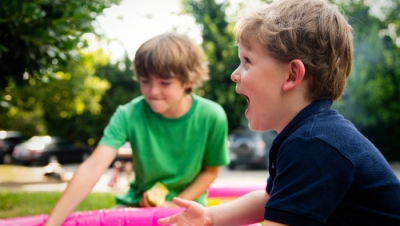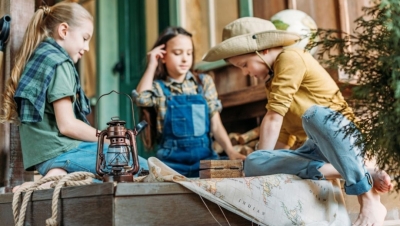Truly understanding children and playgrounds is not as easy as one may think. The way adults perceive playgrounds can be vastly different than a child’s perception of a playground. For example, recently I helped a school district in a large urban area design and order a play structure. The group was comprised of adult leaders of the school and parent organization. The group had done its homework.
They had a very good understanding of the CPSC and ASTM guidelines. They had visited dozens of parks and playgrounds, observing the children and the equipment at these locations. During the process of designing the playground the group eliminated the banister slide. This is a piece of equipment that is comprised of two, two and three-eighths inch pipes that run parallel to each other and slope down to ground level from an elevated deck. The child, as the adults saw it, could put his behind between the pipes and slide down–a slide without a place to put your seat! This playground committee of educated, dedicated and informed adults was confident that the banister slide had no place on their play structure.
Through visiting the existing playground sites, and through the course of communicating with children at these play parks, the committee actually found that most children love to use the banister slide and in fact do not always use it as a sit down and slide component but instead use it as a hanging post or a place to bend and twist their bodies. They use it as a climber and for numerous other creative activities. Children love the banister slide! This playground design group had learned that a child sees and uses playgrounds differently than an adult may see and use a playground. The design group put the banister slide component back on their list of desirable features as they recognized that a playground must meet the imagination and thrill expectations from a child’s perception of fun.
Another belief I have noticed among adults buying playgrounds is that children come to the park, use the equipment to “swing and slide,” and then leave as if playgrounds have a hurried purpose, hurry and slide, hurry and swing–let’s hurry so we can go! If the correct equipment is placed at a children’s park, the children will be in no hurry to leave. The hurry part of life is for adults, (except the “hurry and feed me” part that children would not usually choose to delay); children want to hang about the playground, pretending, laughing with friends and using some of their youthful energy.
When designing or buying a playground, check with local children about the ideas you have come up with. Better yet, let children be involved in the process. It will be a great learning experience for the children, and you will be amazed what you will learn about playgrounds from the kids. Be willing to let yourself view the process from the eyes of those who will be using the equipment. Be willing to listen to what the children have to say. Be willing to imagine! Truly understanding children and playgrounds is as easy as watching, listening, and talking with children. Talk, watch and listen to the children in your community next time you work on a playground project.





Add new comment